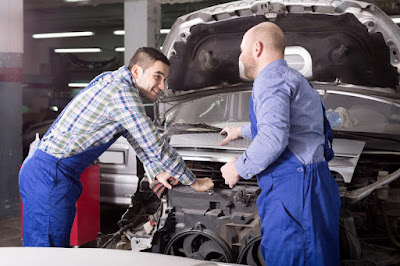Common 4WD Issues You Are Most Likely to Face
If you're anything like me, it's been a long time since you've had to deal with your four-wheel-drive vehicle. In fact, it might have been so long that you don't even remember what 4WDs are supposed to do. Well, I'm here to tell you that 4WDs are actually pretty simple vehicles; this is what 4wd diesel mechanic Melbourne says, and they are not at all difficult to use—except when they break down! And did I mention that they tend to break down frequently?
Problem 1: Differential leak.
One of the most common 4WD problems that you're likely to encounter is a leaking differential. The differential is the device located between your vehicle's front and rear wheels, which allows them to spin at different speeds while still moving in unison. Differential fluid lubricates these internal gears and bearings, which helps prevent wear and tear on moving parts within the system. The fluid itself is an oily substance that's usually green (though some manufacturers use red or blue), but it can also be light-coloured depending on what brand of synthetic oil was used during the manufacturing of your differential unit.
If you notice any signs of leakage from your vehicle's differential, such as wetness underfoot when parking or mud/dirt stains along wheels where they meet the ground at rest—this could mean that there's a problem with your gearbox!
Problem 2: Stuck in the low or high range.
You might be in either the low range or the high range. To find out, turn the transfer case lever to see if it moves freely. If it does not move at all, then you are definitely in one of these gears. To get out of them, use a floor jack to lift up your vehicle and place blocks under the tires that are spinning freely. Then try to engage each gear again until you find one that works properly.
Problem 3: Driveline grinding.
The driveline is the part of your 4WD that transmits power from the engine to the axle and wheels. It consists of the gearbox, transfer case and front differential (also known as a half-shaft). The drive shaft connects these parts together. If you hear grinding noises from any part of this mechanism, it's likely that something has broken or worn out.
- What is driveline grinding?
Driveline grinding occurs when there is excessive play in any part of your vehicle's drive train – which means there are gaps where gears should engage properly with each other. This causes friction between moving parts that can cause major damage to both them and other components in your car over time if not remedied promptly enough by an expert technician.
Problem 4: Clunking when shifting.
Clunking when shifting is often caused by worn-out bushings in your transfer case. This can be diagnosed by checking the condition of your transfer case's bushing, as well as its seals and pinion gears.
- First, inspect the transfer case bushing (the rubber part) for cracks or tears. If it looks damaged, replace it with a new one that's been properly installed.
- Then check the condition of all other related parts: check for worn-out gears on both sides of the differential; check for worn-out bearings; check for worn-out seals around these parts; also make sure that there aren't any stuck axle shafts causing vibration throughout your vehicle when you turn corners at slow speeds!
- Finally, inspect each axle shaft itself: does it appear bent? Is there any abnormal wear or tear present? If so, then it's probably best to replace those too!
Problem 5: Broken actuator motor.
If your 4WD is having trouble getting into four-wheel drive, the problem may be with the actuator motor. The actuator motor is what allows you to shift gears in and out of the four-wheel drive.
If you're having trouble shifting from two-wheel drive to four-wheel drive, or if one of your wheels isn't turning when it should, this could be a sign that your actuator motor needs replacing.
To diagnose a broken actuator motor: Check for obvious signs like broken wires or cables (you can see them under the dash), faulty wiring connections (check for loose connections at both ends), and other visible damage such as cracks in the housing which will prevent it from working properly.
To fix a broken actuator motor: A new part costs around $250-$300 depending on where you buy it and how good they are at fixing these problems themselves without needing an expert opinion first!
Conclusion
We hope this list helps you identify problems with your 4WD. If you're having trouble, contact a 4wd diesel mechanic Melbourne as soon as possible, so they can fix it up before it becomes serious.





Comments
Post a Comment